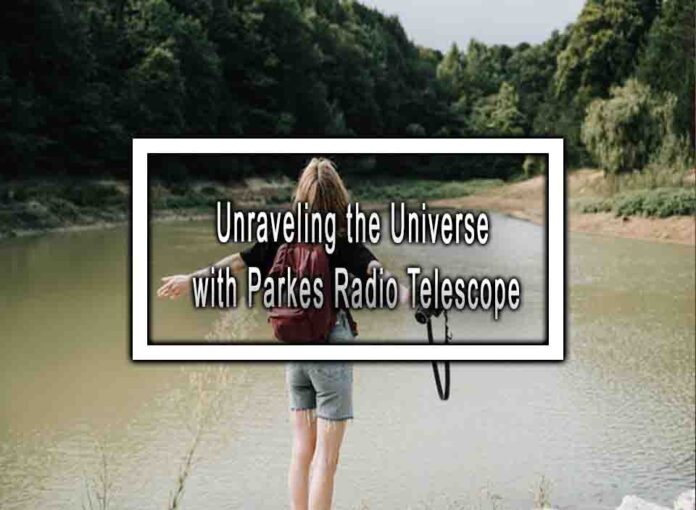Unraveling the Universe with the Parkes Radio Telescope
The Parkes Radio Telescope, located in New South Wales, Australia, is one of the most iconic and significant radio astronomy facilities in the world. Known as “The Dish” due to its distinctive appearance, it has played a pivotal role in unraveling the mysteries of the universe. Let’s explore how the Parkes Radio Telescope has contributed to our understanding of the cosmos.
1. Historical Background:
- The Parkes Radio Telescope was commissioned in 1961 and has been operational ever since.
- It was initially built to support the NASA Apollo missions and played a crucial role in receiving and transmitting live television images of the Apollo 11 Moon landing in 1969.
 2. Radio Astronomy and Discoveries:
2. Radio Astronomy and Discoveries:
- The primary mission of the Parkes Radio Telescope is to conduct radio astronomy observations. Its large dish, measuring 64 meters (210 feet) in diameter, allows it to capture radio waves from celestial objects with great sensitivity.
- The telescope has been instrumental in a wide range of astronomical discoveries and studies, including:
- Pulsars: In 1968, astronomers Jocelyn Bell Burnell and Antony Hewish used the Parkes Telescope to discover the first pulsar, a rapidly spinning neutron star emitting regular radio pulses.
- Quasars: The telescope has been used to study quasars, extremely bright and distant objects powered by supermassive black holes.
- Galactic and Extragalactic Radio Sources: It has contributed to our understanding of various radio sources within our Milky Way galaxy and beyond.
- Cosmic Microwave Background (CMB): The telescope has observed the CMB radiation, providing important data related to the Big Bang theory and the early universe.
3. SETI and Fast Radio Bursts (FRBs):
- The Parkes Radio Telescope has also been involved in the Search for Extraterrestrial Intelligence (SETI) by participating in targeted observations of nearby stars and celestial objects for potential extraterrestrial signals.
- It has detected and studied Fast Radio Bursts (FRBs), mysterious and intense bursts of radio waves from deep space, contributing to our understanding of these enigmatic phenomena.
4. Ongoing Research:
- The Parkes Telescope continues to be at the forefront of radio astronomy research. It is part of a global network of telescopes used for various astronomical studies.
- It plays a role in monitoring pulsars, studying galactic magnetic fields, and contributing to international collaborations, such as the detection of gravitational waves in conjunction with gravitational wave observatories.
5. Public Engagement and Education:
- The Parkes Radio Telescope is not only a research facility but also a popular tourist attraction and educational center.
- It hosts events and educational programs to engage the public and inspire interest in astronomy and space science.
In summary, the Parkes Radio Telescope has been an essential instrument in unraveling the universe’s mysteries for over six decades. Its contributions to radio astronomy, pulsar discoveries, quasar studies, and its involvement in SETI and FRB research have significantly advanced our understanding of the cosmos. It continues to be a vital asset in global astronomical endeavors and serves as a symbol of scientific exploration and discovery.



 2. Radio
2. Radio 






